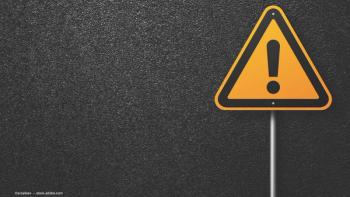
Diquafosol may benefit DED patients
Diquafosol may have a role in the management of dry eye disease (DED), according to a recently published review.
Diquafosol may have a role in the management of dry eye disease (DED), according to a recent review published in Clinical Ophthalmology.
Diquafosol is a uridine nucleotide analogue that is also a P2Y2 receptor agonist. Several randomized controlled trials have shown that the application of topical diquafosol significantly improves the objective markers of DED, including corneal and conjunctival fluorescein staining, tear film break-up time, and Schirmer's test scores. These improvements, however, are accompanied by only partial improvements in patient symptoms.
Both animal and human studies have shown that native P2Y2 agonists may be released at the ocular surface in response to trauma, and also shown to have numerous effects including increased mucin secretion, decreased fluorescein penetrance, accelerated wound healing, and the opening of chloride channels in the apical membrane.
"Progress in the understanding of dry eye pathophysiology and advances in diagnostic methods will help us better understand the place of diquafosol in the overall picture of DED management, overcome the discrepancy between signs and symptoms and find new markers to gauge efficacy in future clinical trials," wrote lead author Oliver C.F. Lau, Sydney Eye Hospital, Sydney, NSW, Australia, and co-authors.
"Further studies may be useful to clarify its role in specific subgroups of DED, such as meibomian gland dysfunction, Sjögren's syndrome, or DED recalcitrant to more traditional therapies. Longer-duration studies, as well as studies examining the effect of diquafosol on corneal sensation and nerve structure, and potential synergistic interplay between diquafosol and other therapeutic agents such as ocular lubri¬cants, traditional topical immunomodulatory agents such as prednisolone and cyclosporine, and newer targeted molecular agents would also be of great interest," the authors concluded.
To view the abstract, click
Newsletter
Get the essential updates shaping the future of pharma manufacturing and compliance—subscribe today to Pharmaceutical Technology and never miss a breakthrough.















































